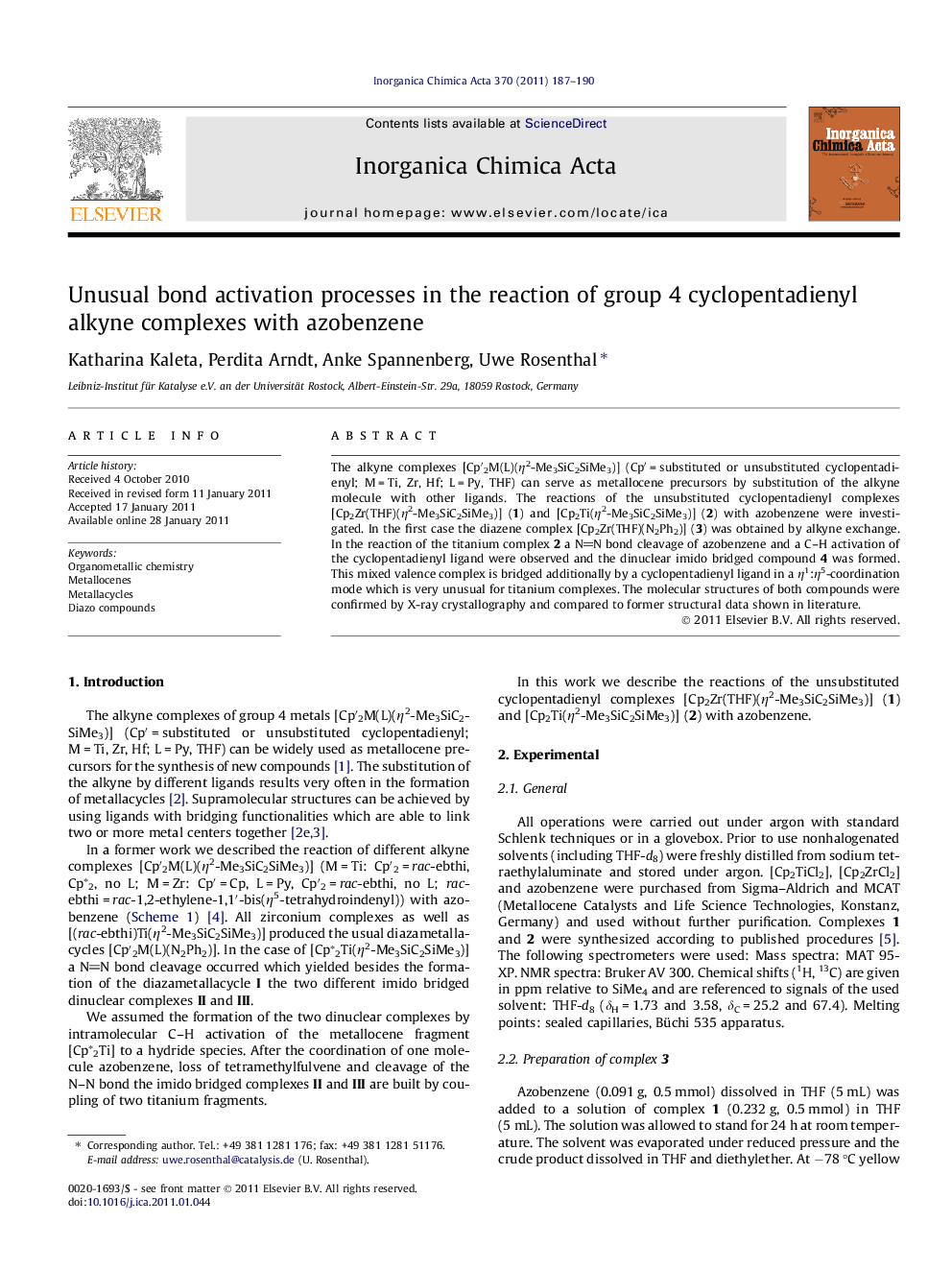| Article ID | Journal | Published Year | Pages | File Type |
|---|---|---|---|---|
| 1306276 | Inorganica Chimica Acta | 2011 | 4 Pages |
The alkyne complexes [Cp′2M(L)(η2-Me3SiC2SiMe3)] (Cp′ = substituted or unsubstituted cyclopentadienyl; M = Ti, Zr, Hf; L = Py, THF) can serve as metallocene precursors by substitution of the alkyne molecule with other ligands. The reactions of the unsubstituted cyclopentadienyl complexes [Cp2Zr(THF)(η2-Me3SiC2SiMe3)] (1) and [Cp2Ti(η2-Me3SiC2SiMe3)] (2) with azobenzene were investigated. In the first case the diazene complex [Cp2Zr(THF)(N2Ph2)] (3) was obtained by alkyne exchange. In the reaction of the titanium complex 2 a NN bond cleavage of azobenzene and a C–H activation of the cyclopentadienyl ligand were observed and the dinuclear imido bridged compound 4 was formed. This mixed valence complex is bridged additionally by a cyclopentadienyl ligand in a η1:η5-coordination mode which is very unusual for titanium complexes. The molecular structures of both compounds were confirmed by X-ray crystallography and compared to former structural data shown in literature.
Graphical abstractIn the reaction of the metallocene precursors [Cp2M(L)(η2-Me3SiC2SiMe3)] (M = Zr, L = THF and M = Ti, no L) with azobenzene a quite different reactivity depending on the metal center was observed. Zirconium forms a diazene complex whereas titanium induces NN and C–H bond cleavages under formation of an interesting dinuclear complex.Figure optionsDownload full-size imageDownload as PowerPoint slideResearch highlights► The complexes [Cp2M(L)(η2-Me3SiC2SiMe3)] (M = Zr, L = THF and M = Ti, no L) react with azobenzene. ► Zirconium forms a diazene complex under alkyne substitution. ► Titanium induces NN (of azobenzene) and C–H bond (of cyclopentadienyl) cleavages. ► A dinuclear titanium complex was synthesized and characterized.
